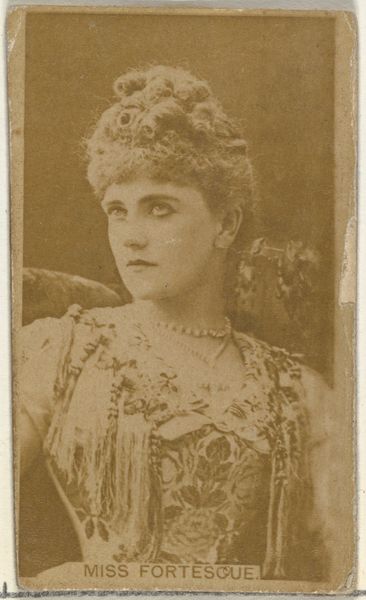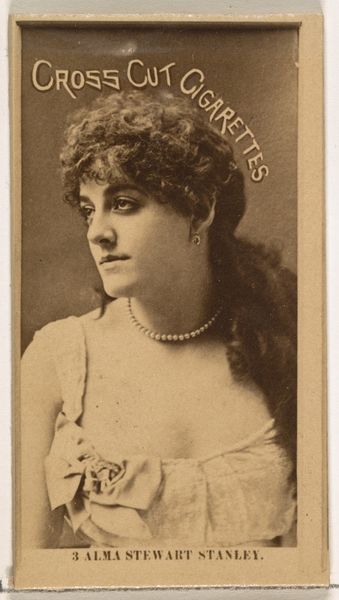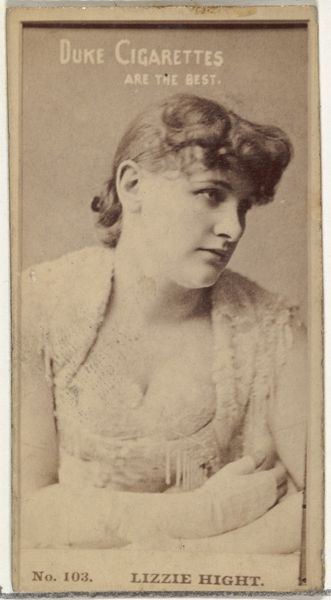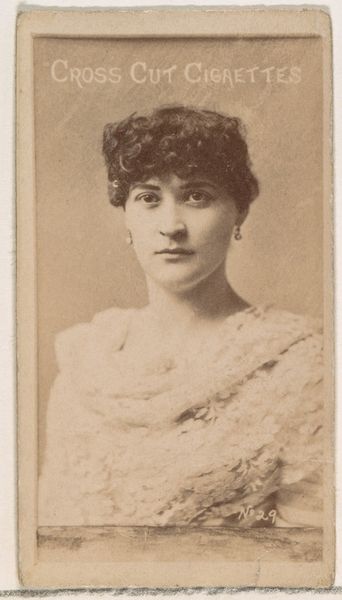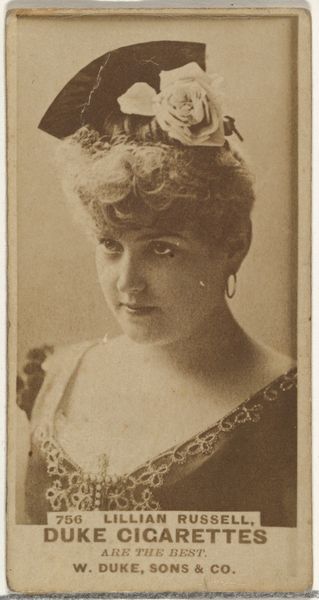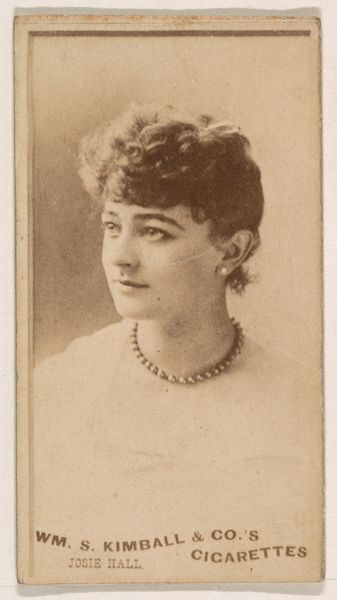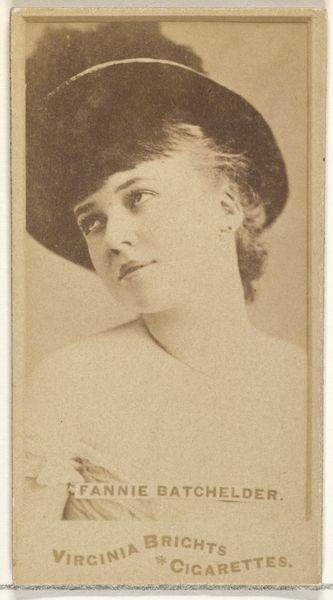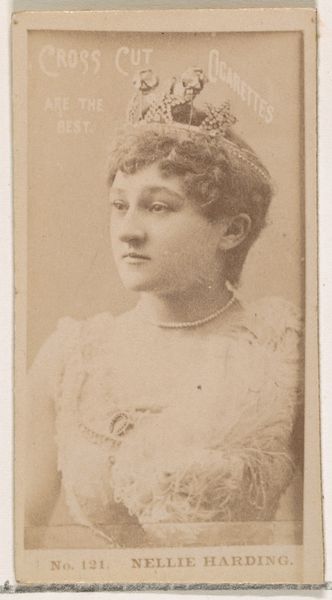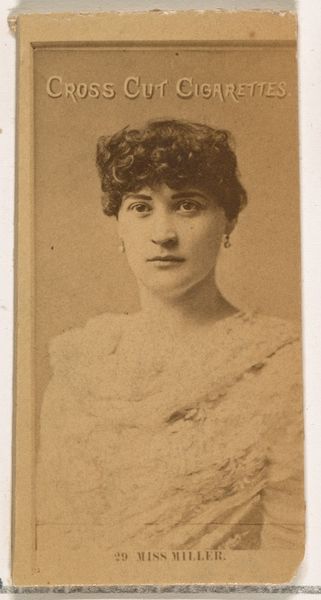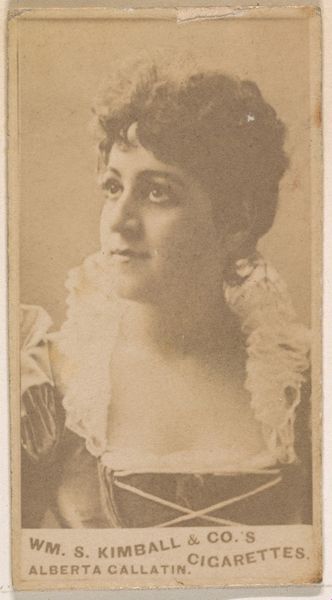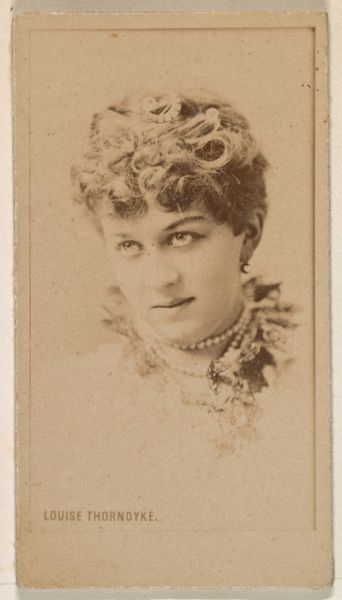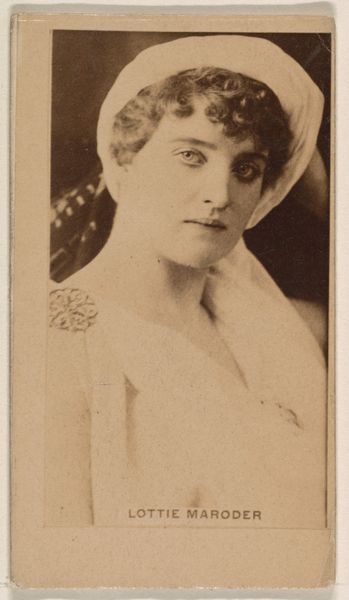
Card Number 28, Agnes Huntington, from the Actors and Actresses series (N145-2) issued by Duke Sons & Co. to promote Cross Cut Cigarettes 1880s
0:00
0:00
drawing, print, photography
#
portrait
#
drawing
#
photo restoration
# print
#
photography
#
19th century
#
men
Dimensions: Sheet: 2 5/8 × 1 7/16 in. (6.6 × 3.7 cm)
Copyright: Public Domain
Curator: Let's turn our attention to "Card Number 28, Agnes Huntington," a print dating from the 1880s and produced by W. Duke, Sons & Co. It’s currently part of the Metropolitan Museum of Art’s collection. Editor: Immediately, there’s something slightly melancholic about this image, even amidst the obvious attempt at glamour. It's almost sepia-toned, casting a soft, romantic filter that makes me wonder about the subject. Curator: These cards were distributed with Cross Cut Cigarettes. What strikes me is the overt connection between mass production, consumerism, and celebrity culture. Here, a portrait, typically considered high art, is reproduced and distributed as a commercial incentive. Editor: Absolutely. The choice of an actress is particularly revealing; celebrity endorsements are nothing new, are they? Agnes Huntington, whoever she was, lent her likeness to shift cigarettes. There’s an inherent performativity about it all, wouldn't you say? Curator: Indeed, these cards also represent a significant development in photographic reproduction and printing technologies. The fact that they could mass produce such images at such relatively low costs expanded access to portraiture, altering the social dynamics of image ownership and distribution. Editor: That crown she wears… It’s difficult to discern its true preciousness or value, even. A prop perhaps, or could it signify her aspiration to high social status? This printed portrait serves both to memorialize Huntington while subtly hinting at a certain commodification. Curator: Right, and in studying the card, we might want to examine the materiality of the object itself. The paper stock, printing techniques, and the degradation of the physical artifact offer additional information on consumption habits and the social history. It also tells a different story to one of an aspiring social climber, it tells one of capitalist enterprise. Editor: Looking at her image again, knowing now what it was designed to do, brings a whole new layer of contemplation to it. It speaks not only to her individual aspirations but the collective aspirations around success, beauty and perhaps most keenly at all, about access to cultural spheres. Curator: This single piece reveals how intertwined the mechanisms of artistic expression, marketing, and mass production really were back then. Editor: Precisely, and reminds us they remain that way, just in updated formats and with other equally intriguing objects to unpack today.
Comments
No comments
Be the first to comment and join the conversation on the ultimate creative platform.
